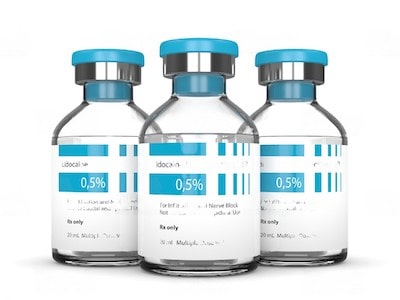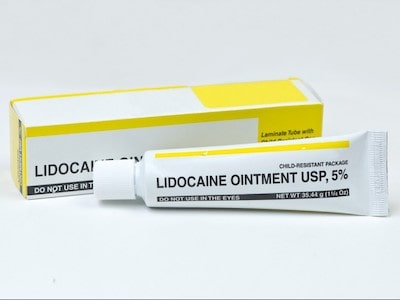As pet owners, we want nothing but the best for our furry friends. When it comes to relieving pain or discomfort in our dogs, lidocaine is often the go-to medication.
However, there’s more to lidocaine than meets the eye. Did you know that this common anesthetic comes with certain risks? And what happens if your pup decides to lick it?
As a responsible pet owner, it’s important to understand the ins and outs of lidocaine and its potential effects on our four-legged companions.
Fear not! This article is here to help. We’ll take a deep dive into the world of lidocaine, exploring its uses, safety, and everything in between.
So, grab your pup and settle in for some must-know information on how to keep your furry friend safe and healthy.
Contents
What is Lidocaine?
A local anaesthetic called lidocaine is often used to numb tissues in both humans and animals. It is a drug that lessens pain and discomfort by preventing the transmission of nerve impulses.
A kind of drug known as an amide anaesthetic, lidocaine is offered in a number of forms, including topical gels and creams, injectable solutions, and skin-applied patches.

Lidocaine is frequently used in veterinary medicine to control discomfort during treatments like surgery and dental work. Also, it is utilised to treat ailments including arthritis and chronic pain[1].
The dosage and mode of administration of lidocaine determine how successful it is whether used alone or in conjunction with other drugs.
Is Lidocaine Safe for Dogs?
Lidocaine is generally safe for dogs when administered by a licensed veterinarian in appropriate doses. When used correctly, lidocaine can provide significant pain relief for dogs undergoing medical procedures or suffering from certain conditions.
But, there are certain dangers connected with using lidocaine on canines, and it’s critical to be aware of these dangers. For instance, some dogs may experience mild to severe allergic responses to lidocaine.

Itching, swelling, hives, breathing problems, or collapse can all be indications of an allergic response. It’s crucial to get veterinarian treatment right away if you encounter any of these symptoms.
Moreover, some dogs that get lidocaine may experience adverse effects like nausea, constipation, trembling of the muscles, or seizures. If lidocaine is provided too soon or at a dose that is too high, these adverse effects are more likely to develop.
Because of this, it’s crucial to get the advice of a vet before administering lidocaine to your dog and to pay close attention to their dose recommendations.
What Happens If a Dog Licks Lidocaine?
Depending on the amount of lidocaine consumed, the size, and the general health of the dog, there might be a variety of negative effects if the dog licks or consumes lidocaine. While some canines may only show minor symptoms, others may show more serious signs that demand prompt medical assistance.

Dogs that have ingested too much lidocaine frequently experience vomiting, diarrhoea, drooling, shaking, and lethargy. In extreme circumstances, the dog can have convulsions, have breathing problems, or even pass out. After being exposed to lidocaine, these symptoms may start to appear minutes to hours later.
You should call your veterinarian right away if you think your dog may have consumed lidocaine. Your veterinarian can provide recommendations for the best course of action based on the severity of the exposure.
Induced vomiting, the use of activated charcoal to remove any traces of lidocaine still present in the stomach, and the provision of supportive care are all possible forms of treatment.
What to Do If a Dog Licks Lidocaine
If your dog licks lidocaine, it is important to take immediate action to ensure their safety. The steps you should take will depend on the amount of lidocaine that was ingested and the severity of any symptoms that develop. Here are some general guidelines to follow if your dog licks lidocaine:

- Remove any remaining lidocaine: Remove the lidocaine from your dog’s reach right away to stop future exposure. Wash any remaining drug residue from your dog’s skin or fur with soap and water.
- Monitor your dog for symptoms: Keep a close check on your dog for any poisoning symptoms, such as lethargy, shaking, vomiting, or diarrhoea. For advice if you experience any symptoms, speak with your veterinarian right away.
- Seek veterinary care: Take your dog to the vet straight away if they consumed a lot of lidocaine or if they have any serious symptoms. Your dog’s condition may be assessed by your veterinarian, who can also administer the necessary care and keep an eye out for any potential side effects.
- Prevent future exposures: Store any medicines, including lidocaine, in a safe place that is out of your dog’s reach to avoid further exposures. When giving your dog medicine, always adhere to the dosage recommendations provided by your veterinarian.
Frequently Asked Questions
What is lidocaine used for in dogs?
Lidocaine is commonly used in dogs to manage pain during medical procedures such as surgeries or dental work. It can also be used to treat chronic pain or arthritis.
Can lidocaine interact with other medications my dog is taking?
Lidocaine can interact with some medications, including certain heart medications or medications that affect the liver. Be sure to inform your veterinarian of any medications or supplements your dog is currently taking to avoid potential interactions.
How long does lidocaine last in dogs?
The duration of lidocaine’s effects in dogs can vary depending on the dose, method of administration, and individual dog’s metabolism. Generally, the effects of lidocaine last between 1-2 hours when given as an injection or topical application.
Can lidocaine be used in dogs with liver or kidney disease?
The use of lidocaine in dogs with liver or kidney disease should be carefully monitored by a veterinarian, as these conditions can affect the way the body processes the medication. In some cases, a lower dose of lidocaine may be needed to avoid potential side effects[2].
Well, It’s a Wrap
In conclusion, lidocaine can be a valuable tool in managing pain and discomfort in dogs when used as directed by a licensed veterinarian. However, there are risks associated with lidocaine use, and it is important to follow dosing instructions carefully and monitor your dog for any adverse effects.
If you suspect your dog has ingested lidocaine or is having an adverse reaction to the medication, seek veterinary care immediately. By working closely with your veterinarian and following their recommendations, you can help ensure that your dog stays safe and comfortable during medical procedures or while managing chronic pain.

A retired veterinary technician and full-time dog parent. James knows to serve the community with the best of his knowledge of animal healthcare. He has been working in a known veterinary clinic for quite a few years. He loves reading blogs on pet nutrition and writes unbiased reviews of dog products.


